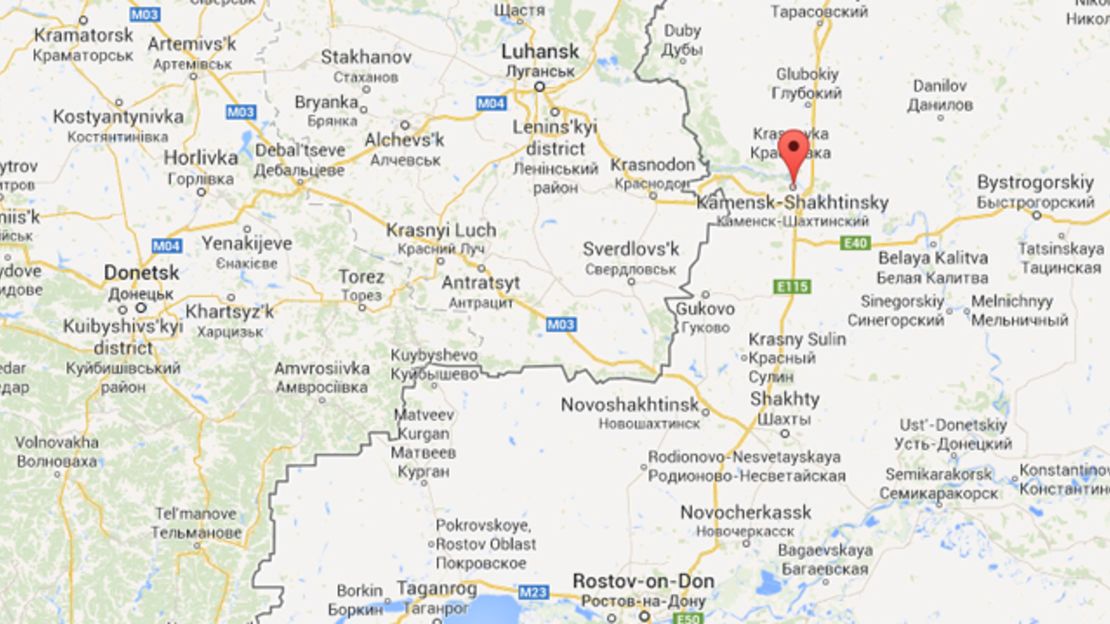Story highlights
Nearly six months after Ukraine's pro-Russia president fell, clashes continue in the east
The Ukraine military is fighting pro-Russia rebels, and accuses Moscow of supporting them
Russia has sent a convoy of trucks it says are carrying aid to the border with Ukraine
But Kiev has expressed fears the trucks are an effort to smuggle supplies to the rebels
Nearly six months since popular protests toppled pro-Moscow President Viktor Yanukovych, fighting between Ukraine’s military and pro-Russia rebels continues in eastern Ukraine.
Russia insists that it should be permitted to send aid to the conflict-battered region, many of whose residents are Russian speakers. It has sent a convoy of trucks it says are carrying relief goods to the border.
But the Kiev government has expressed fears that the mission is a camouflaged effort to smuggle supplies to pro-Russia rebels.
Both countries have asked the International Committee of the Red Cross for help facilitating any delivery of aid.”
From Kiev, CNN’s Will Ripley explains what’s happening on the ground.
What do the rebels still control?
The rebels still control the cities of Donetsk and Luhansk, as well as some border checkpoints in the east.
However, the Ukrainian military appears to have been quickly retaking the territory around the two cities.
It claims that the militants control just 20% of the area they controlled at the height of their power in eastern Ukraine.
Read: Who are Ukraine’s rebels?
Is the Ukraine military still advancing?
Yes, and it appears in recent days the Ukrainian military has been making headway against the rebel forces. Maps provided by the Ukrainian government indicate the size of the rebel territory is shrinking every day.
The strategy of the Ukrainian military has been to break up and isolate the territories, cutting off key roadways and corridors to disrupt what it says is a flow of weapons and fighters from Russia.
Russia denies claims by Kiev and the West that it is providing support to the rebels.
Why is Russia sending convoys – both aid and military – now?
Publicly, Russian officials claim their humanitarian convoy only contains aid to help the people who are suffering in eastern Ukraine.

But there are reports that some of the trucks now being inspected are nearly empty.
Meantime, Western journalists and the Ukrainian government report an armed Russian convoy was seen crossing the border from Russia Thursday night, something Ukraine has been alleging for months.
Such reports feed into the skepticism of the Ukrainian government about this supposed humanitarian aid.
What’s the perceived threat? Is this an invasion or just a show of force?
It’s not an invasion, and not really a show of force either because these armed convoys have allegedly been crossing under the cover of night.
As for Russia’s humanitarian convoy, it appears to be a move allowing Russia to publicly show its sympathy for those are currently suffering because of the fighting in eastern Ukraine.
But allegations of covert weapons smuggling that would allow the bloodshed to continue, raise questions about Russia’s true intentions.
In an interview Monday with Reuters, NATO Secretary General Anders Fogh Rasmussen spoke of a “high probability” that Russia will invade Ukraine.
“We see the Russians developing the narrative and the pretext for such an operation under the guise of a humanitarian operation, and we see a military buildup that could be used to conduct such illegal military operations in Ukraine,” he said.
What has been the reaction in Kiev?
Kiev lawmakers and military officials are not surprised.
They say this is nothing new, it’s just the first time that Western journalists have observed an armed convoy crossing from Russia into Ukraine.
They’re also grateful that foreign journalists have been able to observe and report on this armed convoy because they feel it corroborates their ongoing claims and justifies their skepticism and mistrust of the true intentions of this Russian aid convoy from Moscow.
What’s the bigger picture: Is this all about Putin warning the West not to expand into Ukraine, and other former Soviet satellite states?
Ukrainian lawmakers believe that Putin wants to control Ukraine in an attempt to reestablish a new version of the former Soviet Union. Ukraine would be an important part of that plan.
At the same time, if Ukraine were to align more closely with Europe and see its economy revived, it would not bode well for Russian citizens, who are watching closely what is unfolding in Ukraine.
For example, the former the Soviet state of Poland saw tremendous economic benefits after its alignment with Europe, while under pro-Russian Yanukovych, Ukraine’s economy plummeted and government corruption ran rampant.
Russia wants to exert its power and influence, and if Ukraine successfully integrates into the European Union – and benefits from that partnership – it would be a huge setback for Russia politically and strategically.







